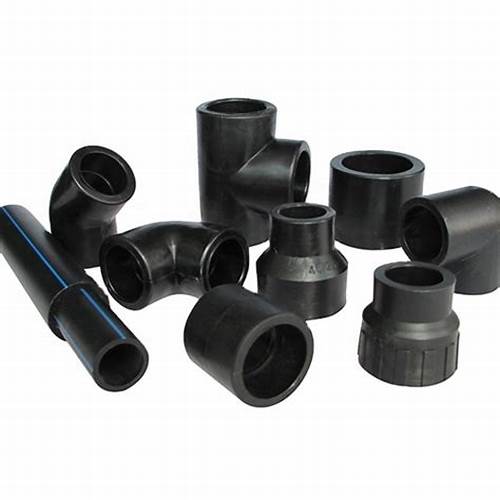sealing flange
Understanding Sealing Flanges An Essential Piece of Mechanical Engineering
In the realm of mechanical engineering and fluid dynamics, sealing flanges play a vital role in ensuring the integrity and efficiency of various systems. These components are crucial for connecting different parts of machinery, piping systems, and equipment in a way that prevents leaks and maintains the necessary pressure within the system. This article delves into the significance, types, applications, and considerations involved with sealing flanges.
What Are Sealing Flanges?
Sealing flanges, also known as flange seals, are flat or raised structures typically made from metals, elastomers, or composite materials that create a seal when bolted between two mating surfaces. These components are designed to withstand different pressures and temperatures, which makes them versatile for various applications, including the oil and gas, petrochemical, pharmaceutical, and food processing industries.
Importance of Sealing Flanges
The importance of sealing flanges cannot be overstated. They contribute to system safety and reliability by
1. Preventing Leaks Properly installed sealing flanges ensure that fluids, gases, or vapors do not escape from the joined surfaces. This is especially critical in high-pressure and high-temperature environments where leaks could lead to catastrophic failures.
2. Facilitating Maintenance Sealing flanges allow for easy disassembly and reassembly of connected components, making maintenance and repairs more straightforward. This feature is crucial in industrial settings where downtime can be costly.
3. Accommodating Thermal Expansion Materials expand and contract with temperature changes. Sealing flanges can accommodate such thermal expansions while maintaining a secure seal, thus preventing leaks due to altered dimensions.
Types of Sealing Flanges
There are several types of sealing flanges, each designed for specific applications
1. Flat Flanges These are the most commonly used flanges, featuring a flat sealing surface. They require a gasket to create a seal and are typically used in low-pressure applications.
2. Raised Face Flanges This type has a raised sealing surface that offers better sealing properties, making it suitable for higher pressure applications. Gaskets are used to fill the gap between the flange faces.
3. Ring-Type Joint Flanges These flanges feature a groove for a metal ring that creates an airtight seal. They are used in high-pressure applications such as oil and gas pipelines.
sealing flange

4. Blind Flanges These flanges are used to close the ends of piping systems. They do not have a hole in the center and are often used in systems that require maintenance access.
5. Socket Weld Flanges These flanges are designed for small-diameter tubes and pipes. They are welded on the inside, making them suitable for high-pressure systems.
Applications of Sealing Flanges
Sealing flanges are found in numerous applications across different industries
- Oil and Gas In drilling and transport, sealing flanges are essential for maintaining pressure and preventing leaks in pipelines and wellheads. - Process Industries In chemical manufacturing, sealing flanges help maintain the purity of fluids and gases by preventing contamination from leaks. - Water Treatment In water treatment facilities, sealing flanges prevent the introduction of contaminants, safeguarding public health.
- HVAC Systems Sealing flanges ensure that air and fluid flow is maintained, preventing energy loss and promoting efficiency.
Considerations for Sealing Flanges
When selecting and installing sealing flanges, several factors should be considered
1. Pressure and Temperature Ratings It is essential to choose flanges that can withstand the specific pressure and temperature of your application.
2. Material Compatibility The flange material should be compatible with the fluids or gases it will encounter to prevent corrosion or degradation.
3. Installation Guidelines Proper installation is crucial for effective sealing. Follow manufacturer guidelines and use the recommended torque specifications.
4. Maintenance Regular inspections and maintenance of sealing flanges can prolong their lifespan and ensure system reliability.
Conclusion
Sealing flanges are integral components in various mechanical systems, ensuring safety, reliability, and efficiency. Understanding their importance, types, applications, and installation considerations helps engineers and technicians make informed decisions that enhance system performance. In an age where industrial efficiency and safety are paramount, investing in quality sealing flanges is a necessary step towards achieving operational excellence.
-
The Versatility of Ball Valves in Fluid Control SystemsNewsJun.10,2025
-
The Practical Benefits of Centerline Butterfly ValvesNewsJun.10,2025
-
The Benefits of Bellows Seal Globe Valves for Industrial SystemsNewsJun.10,2025
-
The Advantages of Offset Butterfly ValvesNewsJun.10,2025
-
Ductile Gate Valves: Strong, Reliable, and Essential for Every SystemNewsJun.10,2025
-
Cast Iron Gate Valves: A Reliable Solution for Every SystemNewsJun.10,2025
-
Why Choose a Brass Gate Valve for Superior Performance and DurabilityNewsMay.09,2025




